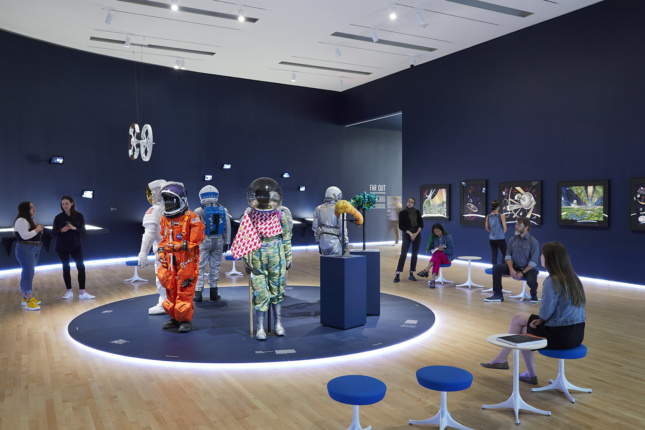In celebration of the semicentennial of the moon landing, the San Francisco Museum of Modern Art (SFMOMA) is holding an exhibition on space-related design that promises to be out-of-this-world. Far Out: Suits, Habs, and Labs for Outer Space opened on July 20th, 50 years to the day after Neil Armstrong became the first human to set foot on the lunar surface, and contains a variety of space suits, hypothetical space habitats, and moon-based laboratory designs.
The objects on display range in practicality from the tried-and-true to the downright quixotic. There are NASA spacesuits designed for real-life astronauts, as well as examples of Neri Oxman’s organically-grown, biomimetic work. Working with the Mediated Matter research group at MIT, she created a wearable that uses a photosynthetic membrane to convert sunlight into usable microbial material for its user. While the device has yet to be taken into outer space, its potential implications for the feasibility of long-term space travel earned it a spot in the exhibit.

Much of the work on display at SFMOMA is decidedly architectural. Architectural illustrator Rick Guidice’s renderings of his Bernal Spheres and Toroidal Colonies, originally produced for NASA, depict suburban housing developments and agricultural landscapes as they might one day exist in free-floating space colonies. The exhibition also includes Mars Ice House, a collaborative project by Clouds Architecture Office (Clouds AO) and Space Exploration Architecture (SEArch) for NASA’s Centennial Challenge Mars Habitat Competition. In its design for a four-person habitat to be placed on the surface of Mars, the team proposed a 3-D printed structure that would be covered in a layer of ice to shield it from the planet’s harsh weather conditions. Visualizations of the design can be viewed in the exhibit, which will be on display through January 20, 2020.











